This is my thread documenting my progress in the Collab2021 project.
@adrian2301, dude - he just gave me full points. He can be as fat & nasty as he wants! 😀
Any progress on your cart ![]() splat21? I know you're plenty busy with the Blog so no worries if this has fallen behind.
splat21? I know you're plenty busy with the Blog so no worries if this has fallen behind.
@theluthier
Homework Submission - Week 2 - Cart
I have made some changes to my model since the first homework submission: revised all assets to remove accents (cracks, etc.) and reorganized to manage lo, med and hi poly versions of objects. For example, a lo-poly board would be the modified cube with a one-segment bevel around its edges. More complex shapes have been simplified. Med-poly adds triangle geometry and holding edges in preparation for the multiresolution modifier. Finally, the hi-poly is what is sculpted.
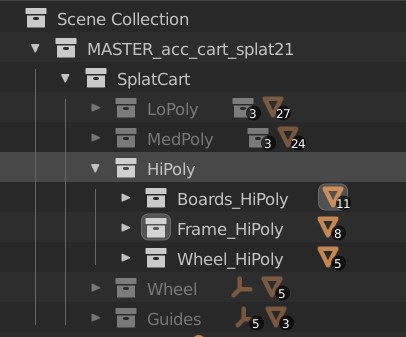
Lo-Poly:
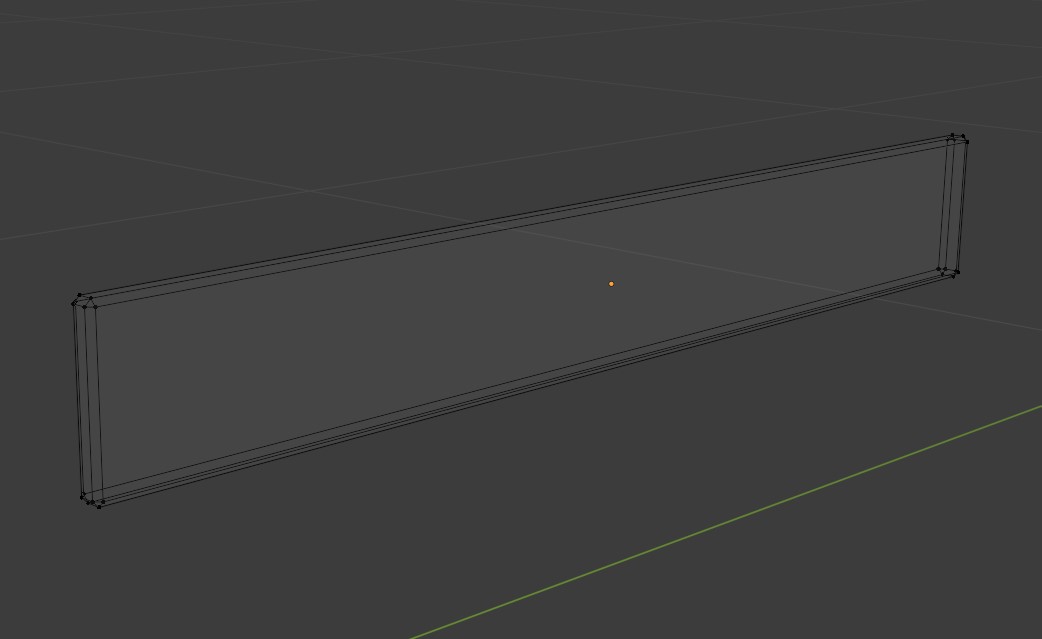
Med-Poly:
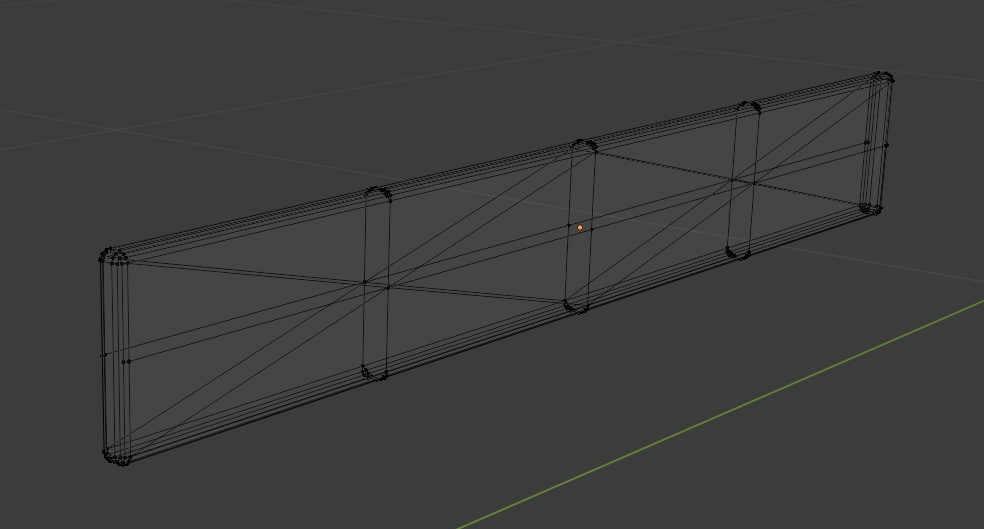
Hi-Poly:
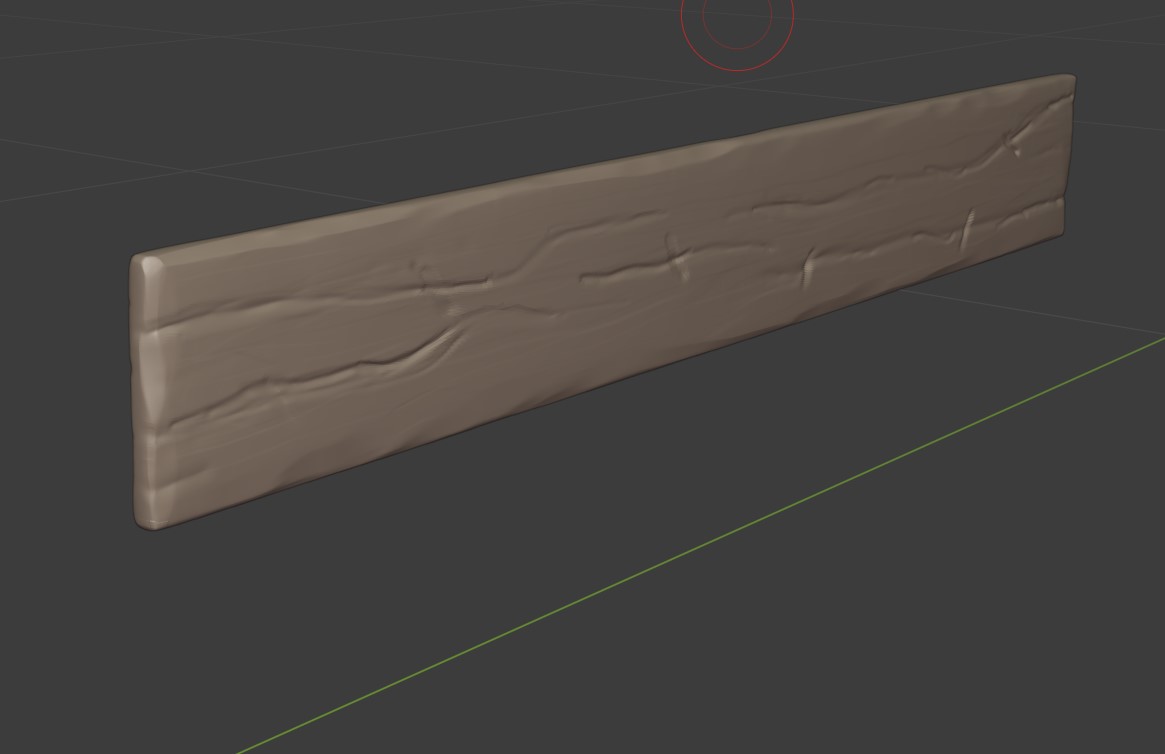
Your sculpt is looking great ![]() splat21! It should all bake down quite well. Can't wait to see it textured 🤩
splat21! It should all bake down quite well. Can't wait to see it textured 🤩
Keep up the good work, sir!
@theluthier, I have been wondering about something. I felt that in my sculpting I did not have enough mesh. The Multiresolution was typically at a level 5 on the boards. But, some of my cuts were not very clean due to the density of the underlying mesh. Can you please tell me:
1) Review my Med-Poly board above. Should it have more geometry (that is, before using the Multiresolution modifier)?
2) In general, I am trying to get my head around triangles vs. quads in the Med-Poly board. I believe from your instruction, you advocated using triangles. Should every feature be a triangle? In other words, as we prepare for the Multires, should we convert quads to triangles?
Thanks
Splat
![]() splat21 I encountered the same problem described by you under the first point. In some areas I could easily model cracks whereas in other areas I encountered the problem that I didn't have enough geometry in order to model the cracks or other finer details in the direction and with the shape that I intended. Concerning your second point above I remember Kent @theluthier simplyfying mmonaloren 's low-poly lantern in one of the livestreams creating a few triangles in order to save vertices. So, triangles are fine with low-poly objects, especially if we don't need to deform them.
splat21 I encountered the same problem described by you under the first point. In some areas I could easily model cracks whereas in other areas I encountered the problem that I didn't have enough geometry in order to model the cracks or other finer details in the direction and with the shape that I intended. Concerning your second point above I remember Kent @theluthier simplyfying mmonaloren 's low-poly lantern in one of the livestreams creating a few triangles in order to save vertices. So, triangles are fine with low-poly objects, especially if we don't need to deform them.
![]() splat21 Your questions are good in that there is a bit of a science to preparing a mesh for ideal sculpting, for which triangles are NOT the ideal; quads are ideal for multires sculpting. Triangles are ideal for an optimal real-time (game-ready) model.
splat21 Your questions are good in that there is a bit of a science to preparing a mesh for ideal sculpting, for which triangles are NOT the ideal; quads are ideal for multires sculpting. Triangles are ideal for an optimal real-time (game-ready) model.
So why did I say it was ok to multires on a triangulated base mesh? Because when a project is low on time you have to brute force your way to a good-enough result! In your case your triangulated mesh is great for a lo-poly model but not great for multires:
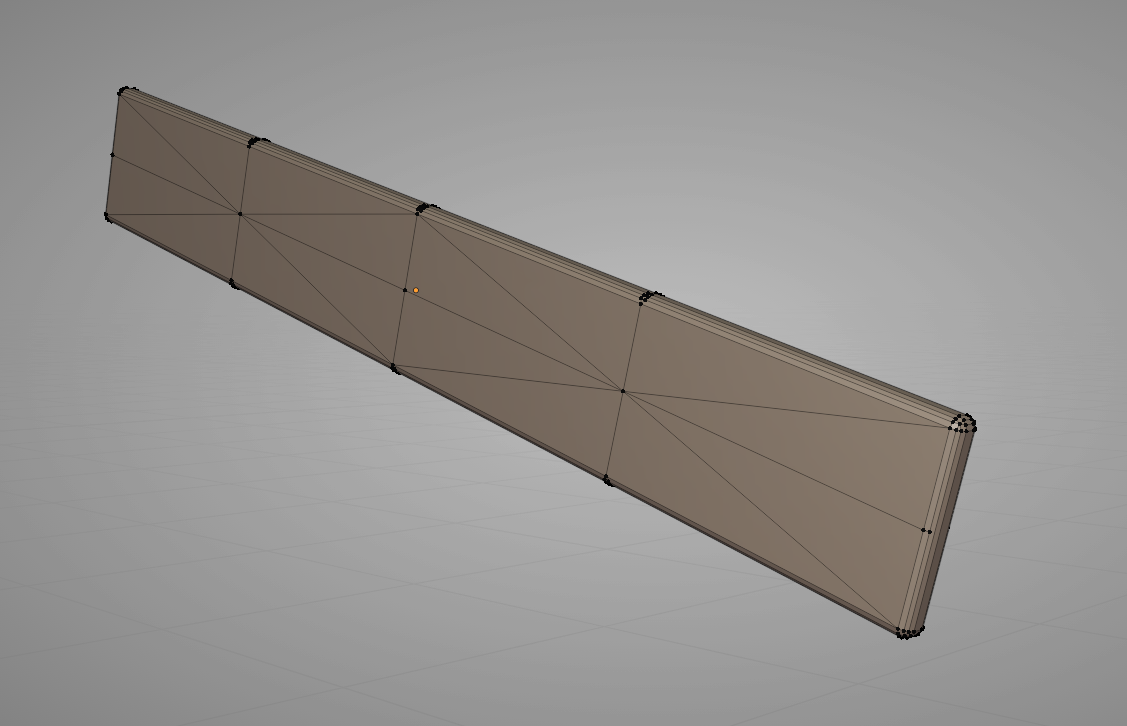
Even though subdivision mathematically will turn triangles into quads, the stretching of the geometry is present through each subdivision level:

See how it's all quads but their stretched toward the pole in the middle of the board? This means sculpting behavior will be stretched accordingly.
What's the solution? Another subdivision level! And another if your PC can handle it. In other words the quick and dirty approach is to simply increase your sculpt's poly count until the stretching problem is not visible. Of course this is not the most efficient way to work.
The most efficient, clean way to work would be duplicating your lo poly before sculpting, converting it to even quads and add multires to that.
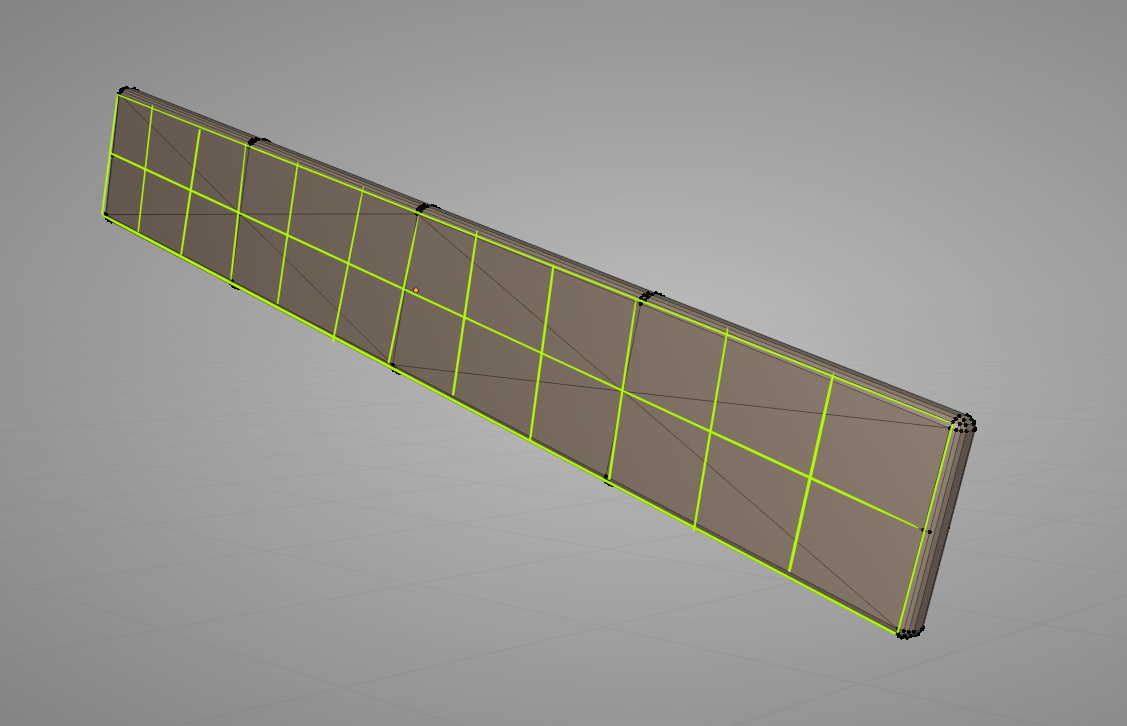
Note that this is ideal prep for multires sculpting but in my opinion it's not ideal for baking textures. This way you have two separate models for baking which can work out fine. But I think the best baking comes from multires baking. I just think the math is more direct. So there's always pros and cons to each method.
Hopefully that clarifies your questions about mesh structure for multires sculpting.